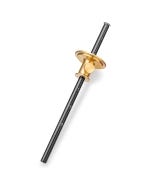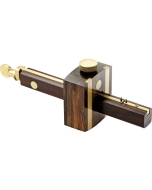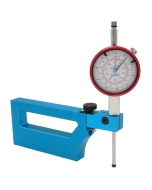Ian Kirby Woodworking Design: Making Cuts and Joinery with Marking Tools
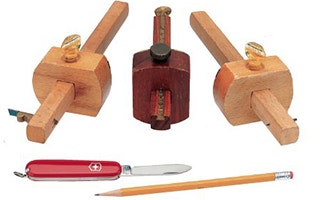
Marking your cuts is an essential step in woodworking, and there are a variety of tools for any job from simple pencils to complex marking knives. If you are going to work wood using hand tools, then all of the traditional marking tools are essential. It is a short list: pencil, marking knife, marking gauge, cutting gauge and mortise gauge. If you are going to work wood using machine tools, they are largely redundant because they are replaced by fences, guides and stops of one sort or another. Of the five tools, the pencil is unique.
It serves two purposes, and it is the only one that doesn’t incise the wood. It makes a mark which will position the workpiece — as in face side and face edge mark — left piece, right piece — 1: 2: 3: and so on. It’s very good at this. Its other purpose is that it will make a mark that you intend to cut to. It’s very bad at that. The line has considerable thickness so the accuracy offered by the other marking tools is not achieved. On the other hand, if you are working construction, it is “near enough.”
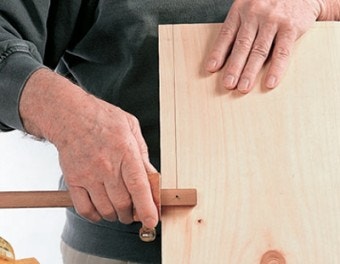
Use the guide on your marking tools to maintain long, straight cut lines when marking out lengthy joinery and cuts Because the other marking tools incise the wood, they make a more finite line. However, they need a guide to be effective. For example, the marking knife is used in conjunction with a try square to knife shoulder lines. It’s also used to mark pins from tails when making a dovetail joint. The three gauges require a straight workpiece edge from which to work. You could think of this as the flip side of a table saw fence. They both require a straight edge from which to operate. The saw fence is fixed and the workpiece moves. In hand work, the fence-gauge moves but the workpiece remains still.
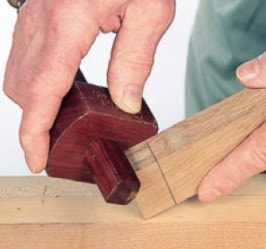
Combinations of these tools can make things easier, usually a pencil and a marking knife to make these mortise cuts more visible. Recently, whilst reading a well-known British author’s book, I was surprised to find that he sharpened the spur on a marking gauge so that it had a knife edge. His claim is that the one gauge will do the work of two. I have also seen this claim from the makers of gauges made from a slim metal rod. It is poor advice. Here is why: the grain on some species will influence the knife edge to wander when used with the grain, especially if you are something of an aspiring woodworker. The knife of a cutting gauge is flat on one side with a sharpening bevel on the other side, making it the proper tool for this task — it will resist the influence of the grain. The sharpened single spur is insufficient for this task and will be more affected by the difficult wood grain. One point: the incision the cutting gauge makes reflects its single bevel knife edge and, to be properly used in some operations, it needs to be turned over.
Keep the inspiration coming!
Subscribe to our newsletter for more woodworking tips and tricks
